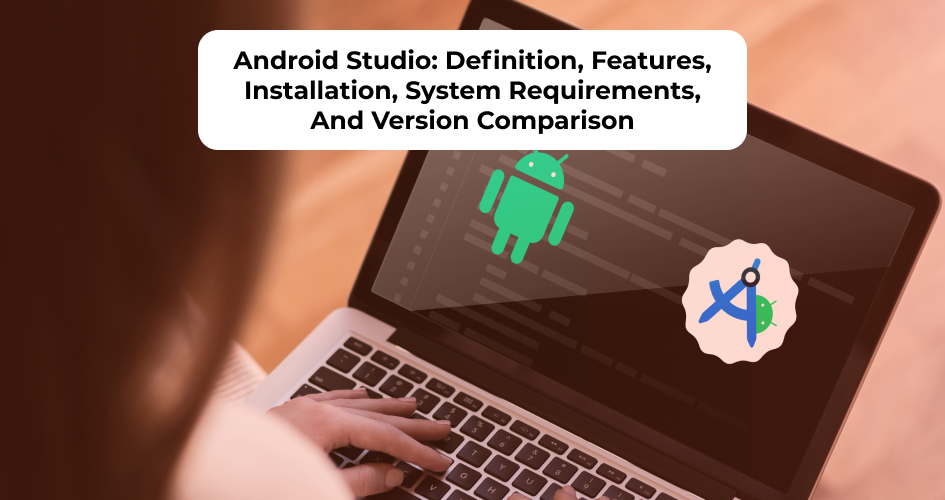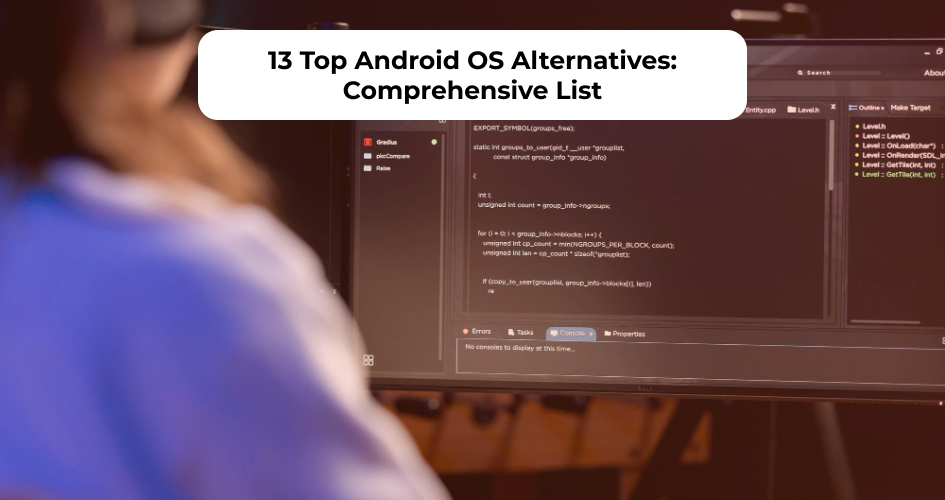Kotlin has gained popularity among developers, with more than 50% of Android developers using it as their primary language.
Not only Kotlin is trending, but it also offers conciseness, extensive features, and robust safety.
No wonder many developers have decided to convert Java to Kotlin.
If you also want to migrate to Kotlin and want to do it yourself – not hiring an Android development company – you can follow these practical strategies for a successful transition.
This blog will equip you with knowledge and tools to convert your Java codebase to Kotlin efficiently and effectively.
Let’s explore!
1. Use Automated Conversion Tools
Although developers can use custom scripts to tailor their specific standards, developing a custom one requires significant time and effort.
Meanwhile, automated conversion tools facilitate the Java code to Kotlin migration by automatically generating Kotlin equivalents.
These tools vary in complexity and functionality, offering different approaches to the process.
Below are some common types of automated tools along with their pros and cons.
IDE Plugins
IDE plugins, such as the Kotlin plugin for IntelliJ IDEA or Android Studio, offer built-in support for converting Java code to Kotlin directly within the IDE.
The benefits would be convenience and familiarity for developers who already use the IDE for their development workflow.
These tools also provide real-time feedback during the conversion process to help address any issues quickly.
However, IDE plugins may have limitations in handling large codebases or complex syntax as the tools rely heavily on IDE’s capabilities, which lack advanced features.
Online Converters
An online Java-to-Kotlin converter like Kotlin Playground allows developers to convert Java code to Kotlin directly in their web browser without any installation.
This option is more accessible and convenient, particularly for developers who prefer a lightweight solution or cannot access an IDE.
Online converters usually have a user-friendly interface and immediate feedback on the conversion results.
However, note that these converters may have limitations in handling larger codebases and lack customization options compared to offline tools.
Command-line Tools
Command-line tools, such as “java2kotlin” or “kotlinx-convert”, offer a standalone solution for batch conversion of Java code to Kotlin.
These typically accept input Java files or directories and generate corresponding Kotlin files as output.
This Java to Kotlin converter method is versatile, and developers can ]easily integrate them into automated build processes or CI/CD pipelines.
They provide flexibility in configuring conversion options and can handle large codebases efficiently.
The drawback is that command-line tools may have a steeper learning curve than IDE plugins, requiring developers to familiarize themselves with the interface and configuration options.
Build System Plugins
Build system plugins, such as Gradle or Maven, automate the conversion process as part of the build lifecycle.
They integrate with the build system’s dependency management and configuration, allowing for seamless conversion of Java source files.
Doing so will ensure consistency and reproducibility across development environments and simplify the Kotlin integration into existing projects.
Similar to command-line tools, using build system plugins for code conversion may require familiarity with their configuration and syntax.
Build system plugins also need ongoing maintenance to keep pace with updates in Kotlin and related dependencies, so developers will need to monitor plugin releases, apply updates, and address compatibility issues to ensure optimal performance.
2. Address Language Difference
When transitioning from Java to Kotlin, developers are most likely to run into several language differences that need careful attention for a seamless migration.
For example, Kotlin’s Null Safety differs from the Java approach to handling null references.
Its type system’s objective is to get rid of the null references’ danger known as The Billion Dollar Mistake.
Kotlin type system has two types of references: Nullable and non-nullable references.
Nullable references refer to variables that can hold either a valid value of the specified type or a special value called “null,” which represents the absence of a value.
They usually are indicated by appending a question mark to the type declaration (e.g., String?).
That way, developers can explicitly handle null values and avoid unexpected
Meanwhile, non-nullable references don’t accept null values and are declared without a question mark (e.g., String).
Developers must give a valid value when declared and set the reference to null.
This means any potential null pointer issues are detected during the coding process, making the code stronger and easier to predict.
Kotlin’s concise syntax compared to Java’s verbose code can also cause a significant language difference when migrating from Java to Kotlin.
In Java, achieving simple tasks in building the Android mobile application features often needs lengthy code lines, while Kotlin offers more concise alternatives.
To address the syntax difference, refactor complex or verbose Java code into more concise Kotlin equivalents during the migration.
This may involve:
- Identifying repetitive patterns
- Eliminating unnecessary code
- Restructuring logic to use Kotlin’s idioms
3. Optimize Kotlin-specific Feature
As developers migrate from Java to Kotlin, they’ll get access to Kotlin-specific features that can improve productivity and code quality.
There are several Kotlin-specific features to expect to help speed up Android development and migration to Kotlin.
Coroutines
Kotlin’s built-in support for coroutines simplifies asynchronous programming by providing lightweight threads
Using coroutines instead of traditional threading mechanisms helps developers write more concise and readable asynchronous code.
This feature can also prevent callback hell, a situation in asynchronous programming where code becomes difficult to read and maintain due to excessive nesting of callback functions.
Java often uses callbacks to handle asynchronous operations, but they often result in multiple layers of nested callbacks, leading to code that is hard to understand and debug as well as increasing the probability of bugs.
Extension Functions
Kotlin’s extension functions enable developers to add new functionality to existing classes without modifying their source code.
Using extension functions helps developers create utility methods that improve the functionality of standard library classes or third-party APIs, promoting code reuse and encapsulation.
DSLs (Domain-Specific Languages)
Kotlin’s concise syntax and support for DSLs make the programming language suitable for creating fluent APIs that provide an intuitive way to interact with libraries and frameworks.
By using Kotlin’s support for DSLs during the Java to Kotlin migration, developers can refactor their code to make more readable APIs to make the process smoother.
Additionally, DSLs can help bridge the gap between the existing Java codebase and the Kotlin code by providing a familiar and idiomatic way to interact with libraries and frameworks in Kotlin.
Smart Casts
Smart casts in Kotlin contribute to the Java-to-Kotlin migration by simplifying code.
This feature can be the reason why Kotlin is preferred over Java.
In Java, developers often need to perform explicit type checks and casts, which can lead to verbose code.
However, Kotlin’s smart casts automatically cast variables to more specific types within conditional blocks, eliminating the need for explicit type checks and casts.
This feature helps reduce boilerplate code, improve readability, and remove redundant type checks and casts during the migration process.
4. Perform Code Cleanup
During the migration from Java to Kotlin, code cleanup plays a crucial role in improving the quality, readability, and maintainability of the migrated codebase.
Follow these tips to clean up code during your migration process:
- Remove redundant code. This step includes removing explicit type declarations, semicolons, and unnecessary parentheses, as Kotlin’s syntax is more concise.
- Replace Java idioms with Kotlin equivalents. An example is replacing Java’s getters and setters with Kotlin’s property syntax, and refactoring loops and conditional statements.
- Convert utility classes to extension functions. Extension functions in Kotlin allow developers to add functionality to existing classes without modifying the source code.
- Simplify error handling. Replacing Java’s checked exceptions with Kotlin’s nullable types and functional error handling constructs such as the “runCatching” and “let” functions.
- Convert Java collections to Kotlin collections. Use the “toList()”, “toSet()”, and “toMap()” extension functions to improve interoperability between Java and Kotlin code.
- Apply code style conventions. Use tools like Ktlint or IntelliJ IDEA’s code formatting options to automatically apply code style conventions and maintain codebase consistency.
7. Manage Dependencies and Third-Party Libraries
Managing dependencies and third-party libraries will help maintain the migrated code’s functionality and address the compatibility issues if any.
It also allows developers to update or replace libraries with Kotlin-friendly alternatives or another related technology stack for Android apps.
Start by analyzing the existing dependencies in the Java codebase.
Use tools like the Kotlin Migration Assistant to identify potential compatibility issues and determine whether updates or replacements are needed.
Then, explore Kotlin-specific libraries and frameworks that offer native support for Kotlin’s features and idioms.
Consider Kotlin-friendly alternatives to Java libraries whenever possible.
If needed, develop custom Kotlin extensions.
This functions to bridge the gap between Java dependencies and Kotlin code and offer more concise APIs tailored to specific use cases.
6. Do Testing and Quality Assurance
Testing and quality Assurance are important to ensure the existing features of Java remain working well during and after the migration process.
These are testing and quality assurance (QA) practices to check if the migrated code is correct.
Unit Tests
Start by updating existing unit tests to reflect the changes during the migration from Java to Kotlin.
Verify that unit tests cover all critical functionality and edge cases, and modify them as needed to accommodate changes in method signatures, null safety, and Kotlin-specific features.
Regression Testing
This testing helps identify and address any regressions or unintended side effects introduced by the migration.
Verify that the migrated code performs consistently with the original Java codebase across various scenarios and use cases.
Integration Testing
Test the interaction and integration of Kotlin code with other components and dependencies in the application.
Ensure that Kotlin modules seamlessly integrate with existing Java modules and third-party libraries, and address any compatibility or interoperability issues if any.
Code Review and Static Analysis
This test aims to identify potential issues, code smells, and violations in the migrated Kotlin code.
Use tools like SonarQube, detekt, or Ktlint to apply code quality standards and ensure compliance with the Kotlin coding guidelines.
Performance Testing
Use this test to assess the performance impact of migrating from Java to Kotlin on critical components and functionalities.
Monitor resource utilization, response times, and throughput to identify bottlenecks or degradation.
Security Testing
Security testing’s goal is to identify and address potential vulnerabilities and weaknesses made by the migration process.
This step can include:
- Vulnerability scanning, such as outdated libraries and insecure configuration.
- Penetration testing or ethical hacking that simulates real-world attacks, such as attempts to gain unauthorized access.
- Code analysis, such as injection flaws, authentication bypasses, or insecure cryptographic implementations.
- Authentication and authorization testing, involves testing user authentication flows, access control policies, and session management.
- Security configuration testing, which includes server configurations, network settings, and access controls.
- Compliance testing, to verify that the app complies with relevant security standards, like GDPR, PCI DSS, HIPAA, or OWASP guidelines.
User Acceptance Testing (UAT)
Involve stakeholders and end-users in this step to validate the functionality, usability, and user experience of the migrated Kotlin code.
Gather feedback and make any necessary changes or enhancements to meet user expectations.
Conclusion
Kotlin is one of the major Android app development trends recently, so converting from Java to Kotlin is a compelling idea to keep up with the emerging technology.
However, transitioning from Java to Kotlin is not merely a matter of syntax conversion.
You need to be aware of the language difference and Kotlin-specific features.
It’s also important to do code cleanup as Java’s redundant code is different than Kotlin’s concise syntax.
After transitioning the code using IDE plugins, online converters, or command-line tools, don’t forget to complete multiple tests to make sure the Android features built with Java work well on Kotlin.
If you’re interested in migrating your Java codebase to Kotlin, remember that our Android app development agency is here to support you and boost your Android app performance.
With our expertise in Kotlin development and experience in migration projects, we can provide the guidance, tools, and resources you need to seamlessly convert your Java codebase to Kotlin.
Get in touch with our team to find assistance and the best solutions for your Android app migration project!





